Space News
Medium
340

Image Credit: Medium
Why NASA cant be allowed to be torn down.
- NASA plays a crucial role in advancing technology and supporting the private industry by undertaking risky research that industry cannot do.
- NASA stimulates the economy, generating $3 for the economy for every $1 invested in it.
- Diminished funding and support have made growth and progress more challenging for NASA, leading to disasters such as the Columbia Accident.
- The lack of thorough consideration and desire to cut down the NASA workforce have had detrimental effects on the agency's ability to innovate and explore.
Read Full Article
20 Likes
Arstechnica
119

Image Credit: Arstechnica
Turning the Moon into a fuel depot will take a lot of power
- Producing fuel on the Moon is an option for space exploration beyond Earth's orbit.
- A study in PNAS evaluates the energy costs of producing oxygen on the Moon.
- The study finds that it requires about 24 kWh of energy per kilogram of oxygen produced.
- This poses a challenge for the infrastructure required to produce sufficient fuel on the Moon.
Read Full Article
7 Likes
Universe Today
156
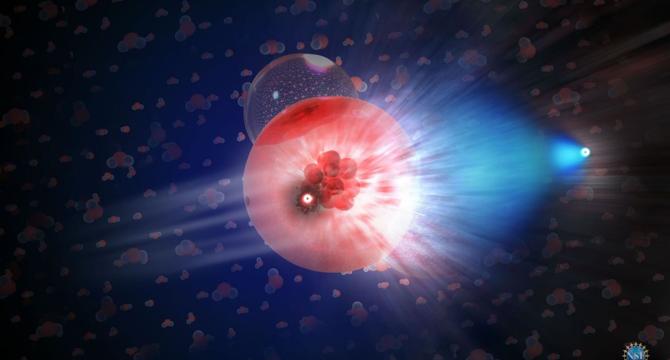
Image Credit: Universe Today
An Unfinished Detector has Already Spotted the Highest-Energy Neutrino Ever Seen
- The KM3NeT neutrino telescope, still under construction, detected the highest-energy neutrino ever recorded before completion.
- Neutrinos are challenging to detect due to their elusive nature and only interact through gravity and the weak nuclear force.
- Neutrinos are often referred to as 'ghost particles' as they have no electric charge and minimal interactions with matter.
- A recent observation by KM3NeT in the Mediterranean Sea marked a milestone in detecting cosmic neutrinos.
- The detected neutrino was associated with a muon with an energy level of 120 (+110/-60) petaelectronvolts.
- High-energy neutrinos like these may originate from distant cosmic sources, providing insights into astrophysical phenomena.
- The detection indicates the possibility of observing cosmogenic neutrinos resulting from interactions of ultra-high-energy cosmic rays.
- The KM3NeT Collaboration aims to enhance detector positioning to improve source direction accuracy for future detections.
- Potential sources for the detected neutrino include active galactic nuclei like blazars, as suggested by researchers.
- Neutrinos are valuable in understanding the Universe, with this detection offering significant insights into neutrino astrophysics.
Read Full Article
9 Likes
Universe Today
363
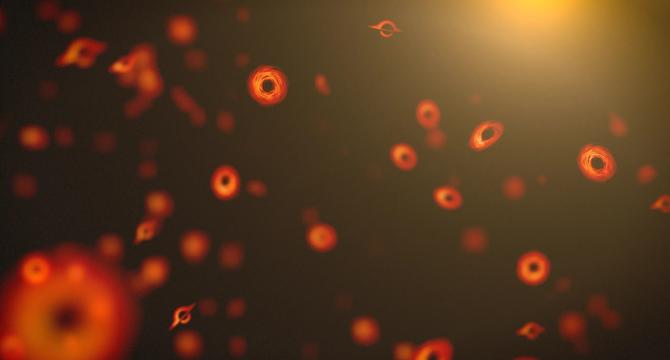
Image Credit: Universe Today
What Would Happen if a Tiny Black Hole Passed Through Your Body?
- A new study investigates the potential effects of a primordial black hole passing through the human body.
- Tidal forces from an asteroid-mass black hole passing through the body would be localized and could damage tissue in a small area.
- If a black hole passed through the head, brain cells could be torn apart due to tidal forces, potentially causing a fatality.
- Shockwaves created by a black hole passing through the body could cause physical damage to cells and transfer heat energy, posing a greater risk of fatality.
Read Full Article
21 Likes
Discover more
Nasa
248

Image Credit: Nasa
Cookies, Cream, and Crumbling Cores
- NASA's Mars Perseverance rover captured images of the rock sample 'Serpentine Lake' using its SHERLOC WATSON camera, uncovering potential signs of past microbial life.
- Perseverance's unconventional route led to the discovery of ancient rocks, possibly the oldest on Mars, prompting excitement among scientists.
- During the Crater Rim Campaign, Perseverance found diverse rock formations, including the 'Serpentine Lake' resembling 'cookies & cream' dessert.
- A sampling attempt at 'Cat Arm Reservoir' failed due to weak rocks disintegrating, leading to a second core retrieval mission.
- Perseverance seeks to acquire a core sample of the altered 'Serpentine Lake' rock, expecting further scientific revelations.
- The rover plans to explore 'Broom Point,' an area with layered rock formations, for potential groundbreaking discoveries.
- Written by Athanasios Klidaras, a Ph.D. student at Purdue University, the article highlights Perseverance's intriguing findings on Mars.
- Perseverance's mission on Mars involves exploring geological history, searching for ancient habitable environments, and studying rock formations.
- The rover's scientific instruments aid in analyzing minerals and textures to understand Mars' past environments and potential for life.
- Perseverance's continuous exploration and sampling missions add valuable insights to Mars' geological evolution and history of water presence.
Read Full Article
14 Likes
Spaceflightnow
275

Live coverage: SpaceX Falcon 9 launch to feature first landing attempt in The Bahamas
- SpaceX is preparing for its first launch that features a booster landing attempt in The Bahamas.
- The Falcon 9 rocket will launch the Starlink 10-12 mission at 6 p.m. EST on Tuesday, Feb. 18.
- Weather conditions are favorable with a 95 percent chance for good weather during the primary launch window.
- If successful, this will be the 110th landing on the droneship and the 410th booster landing to date.
Read Full Article
16 Likes
The Verge
128

Image Credit: The Verge
A team from SpaceX is being brought in to overhaul FAA’s air traffic control system
- A team from SpaceX, led by Elon Musk, is visiting the Air Traffic Control Command Center to help overhaul the system in the wake of a recent air disaster.
- The Federal Aviation Administration (FAA) fired hundreds of probationary employees who maintain critical air traffic control infrastructure.
- The move is part of the Trump administration's efforts to eliminate thousands of federal employees in pursuit of a massive tax cutting bill.
- Critics have raised concerns about a potential conflict of interest due to Musk's status as a major government contractor.
Read Full Article
7 Likes
Medium
340

Image Credit: Medium
The Ultimate Guide to Unlocked Samsung Galaxy Smartphones Features Benefits You Should Consider…
- Unlocked Samsung Galaxy smartphones offer the freedom to choose or switch carriers.
- They provide seamless international roaming by easily using local SIM cards.
- Unlocked phones have no bloatware and receive software updates faster.
- They have higher resale value and offer flexible pricing options.
Read Full Article
20 Likes
Livescience
422

Image Credit: Livescience
'We don't feel stranded': Astronauts 'stuck' in space set the record straight
- Boeing's Starliner astronauts, Suni Williams and Butch Wilmore, faced an extended stay in orbit due to thruster malfunctions during docking.
- They were integrated into SpaceX's Crew-9 mission, extending their space stay beyond the initial plan.
- Despite headlines calling them 'stranded astronauts,' Williams and Wilmore continued their duties on the ISS.
- President Trump's comments and delays in Crew-10's launch have drawn attention to their situation.
- NASA has had to swap spacecrafts for Crew-10 to accommodate manufacturing delays.
- The astronauts clarified that mission extensions are part of the job and they don't feel abandoned.
- All ISS astronauts are prepared to return in emergencies, emphasizing their readiness and commitment.
- Williams and Wilmore urged for a change in the rhetoric surrounding their situation during an interview with CNN.
- Both astronauts have previous spaceflight experience and are enjoying their time in space.
- NASA is targeting March 12 for the launch of the Crew-10 mission with the Crew Dragon capsule Endurance.
Read Full Article
25 Likes
Livescience
0
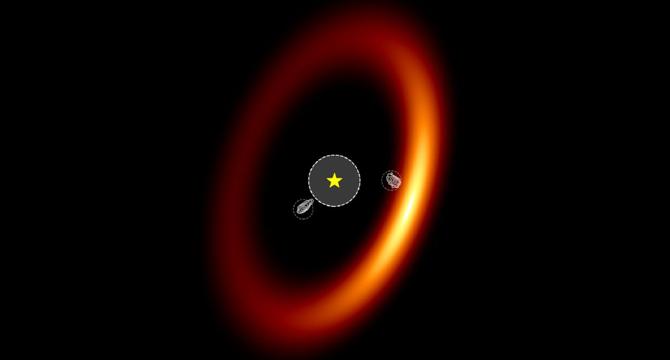
Image Credit: Livescience
'Like a family photo of our solar system': The James Webb telescope is watching 2 alien planets being born before our eyes
- The James Webb Space Telescope (JWST) is observing the formation of two alien planets around the star PDS 70, which is located about 370 light-years away.
- PDS 70b and PDS 70c are the two nascent planets being directly imaged through innovative approaches by researchers using JWST and the European Southern Observatory's Very Large Telescope (VLT).
- The JWST's Near Infrared Imager and Slitless Spectrograph (NIRISS) utilized Aperture Masking Interferometry to observe the planets in high resolution and detected potential material surrounding them.
- Observations with longer wavelengths by JWST indicated warm material around the planets, suggesting accretion from circumplanetary disks, which signals ongoing planet growth.
- The star PDS 70 is still actively accreting material at a young age of about 5.4 million years, offering a rare opportunity to witness planet formation in action.
- The study also hints at the presence of a third planet, PDS 70d, providing additional insights into the evolving planetary system.
- Further observations and follow-up studies are needed to confirm the nature of the third potential planet and understand its atmospheric composition.
- This research sheds light on the ongoing planet formation processes and the dynamic interactions within the PDS 70 planetary system.
- The findings contribute to our understanding of how planetary systems evolve and provide valuable insights into the mechanisms of planet growth and accretion.
- The ability to directly observe exoplanets and their formation using advanced telescopes like JWST opens up new opportunities for studying the origins of planetary systems.
- The discoveries made through these observations showcase the intricate and fascinating processes involved in the birth and evolution of planets around young stars.
Read Full Article
Like
Brighter Side of News
422
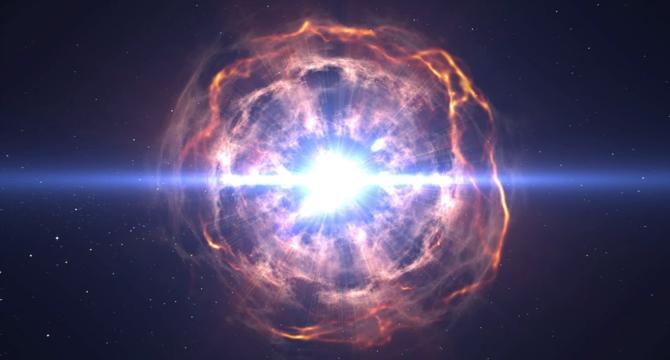
Image Credit: Brighter Side of News
4,000 white dwarf star explosions revolutionize dark energy research
- Type Ia supernovae have long been crucial tools in cosmology for measuring vast distances and understanding dark energy.
- Recent research challenges previous assumptions about these supernovae, revealing unexpected diversity in their explosion mechanisms.
- Observations show variability in explosion behaviors, raising concerns about using them uniformly as distance markers.
- Studying host galaxies is crucial for understanding supernovae, as their properties correlate with explosion brightness.
- Insights from a dataset of 4,000 nearby supernovae have provided unprecedented insights into white dwarf explosions.
- The diversity in explosion mechanisms could impact the precision of cosmological models related to dark energy.
- Advancements in sky surveys allow for detailed studies of galactic structure and its correlation with supernova behavior.
- Researchers aim to refine the standardization of Type Ia supernovae using galactic morphology for improved distance measurements.
- The variety of white dwarf explosions offers opportunities to enhance our understanding of stellar evolution and cosmic forces.
- Future studies are expected to refine how supernovae contribute to our knowledge of cosmic expansion and dark energy.
Read Full Article
25 Likes
Arstechnica
372

Image Credit: Arstechnica
NASA nominee previews his vision for the agency: Mars, hard work, inspiration
- Jared Isaacman, likely next leader of NASA, has a vision of Mars, hard work, and inspiration.
- Isaacman must still be confirmed by the US Senate to officially lead NASA.
- This interim period limits public comments from Isaacman to avoid controversy during confirmation process.
- NASA under Isaacman's leadership will face multiple challenges and uncertainties.
Read Full Article
22 Likes
Universe Today
326
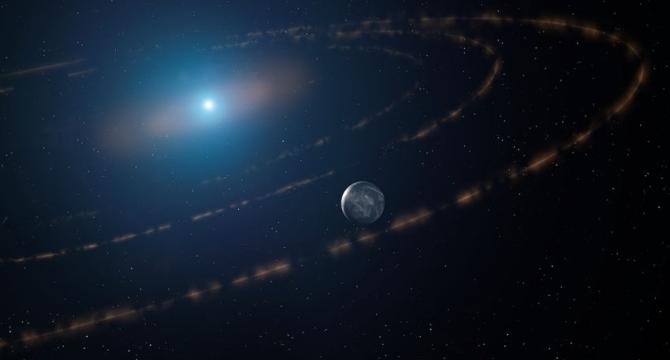
Image Credit: Universe Today
Breaking the Curse of the Habitable Zone
- The concept of the Habitable Zone is being reconsidered as it is seen as too restrictive for the possibility of life outside Earth.
- Hycean worlds and tidally-locked planets around red dwarf stars may have the right conditions to support life, challenging our previous assumptions.
- Dead stars like white dwarves and neutron stars, as well as molecular clouds, could also provide potential habitats for life.
- Research should focus on expanding our understanding of where and how life can exist, rather than exclusively searching for life similar to our own.
Read Full Article
19 Likes
Popsci
45

Image Credit: Popsci
One large Milky Way galaxy or many galaxies? 100 years ago, a young Edwin Hubble settled astronomy’s ‘Great Debate.’
- A century ago, Edwin Hubble expanded the known universe, revealing that the Andromeda nebula was distant from the Milky Way.
- Hubble's discoveries paved the way for exploring a vast universe containing trillions of galaxies.
- Early astronomers initially believed the Milky Way encompassed the entire universe.
- Nebulae were classified into gaseous regions, clusters of stars, and those with spiral structure like the Andromeda nebula.
- In the 'Great Debate,' astronomers debated whether spiral nebulae were small and within the Milky Way or distant galaxies.
- Hubble utilized Cepheid variables to calculate the distance to M31, determining it was much farther than previously thought.
- Hubble's discovery ended the debate about the Milky Way's size and the nature of nebulae.
- Hubble also observed the redshift indicating galaxies were moving away, leading to the understanding of an expanding universe.
- Georges Lemaitre proposed the idea of an expanding universe and the big bang theory.
- Hubble's legacy continues with NASA's Hubble Space Telescope and advancements in studying galaxies, reaching billions of light years away.
Read Full Article
2 Likes
Livescience
376
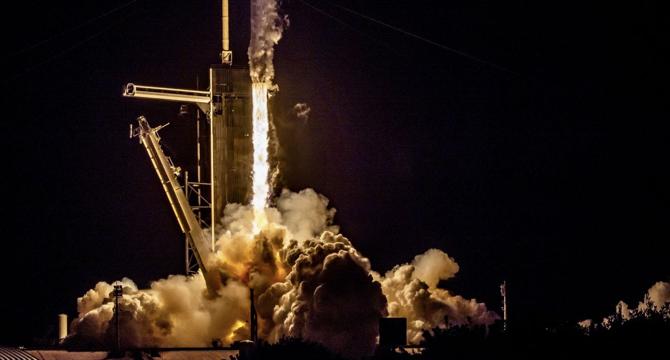
Image Credit: Livescience
There was nearly 1 rocket launch attempt every 34 hours in 2024 — this year will be even busier
- 2024 set spaceflight records with 259 launches worldwide and one launch attempt every 34 hours.
- SpaceX recorded 132 Falcon 9 flights in 2024, accounting for more than half of the global launch traffic.
- Military spacecraft deployment increased by 86% in 2024, primarily due to satellites launched by SpaceX for national security efforts.
- The space industry is set to be even busier in 2025, with upcoming launches from Blue Origin, Sierra Space, Rocket Lab, and more.
Read Full Article
22 Likes
For uninterrupted reading, download the app